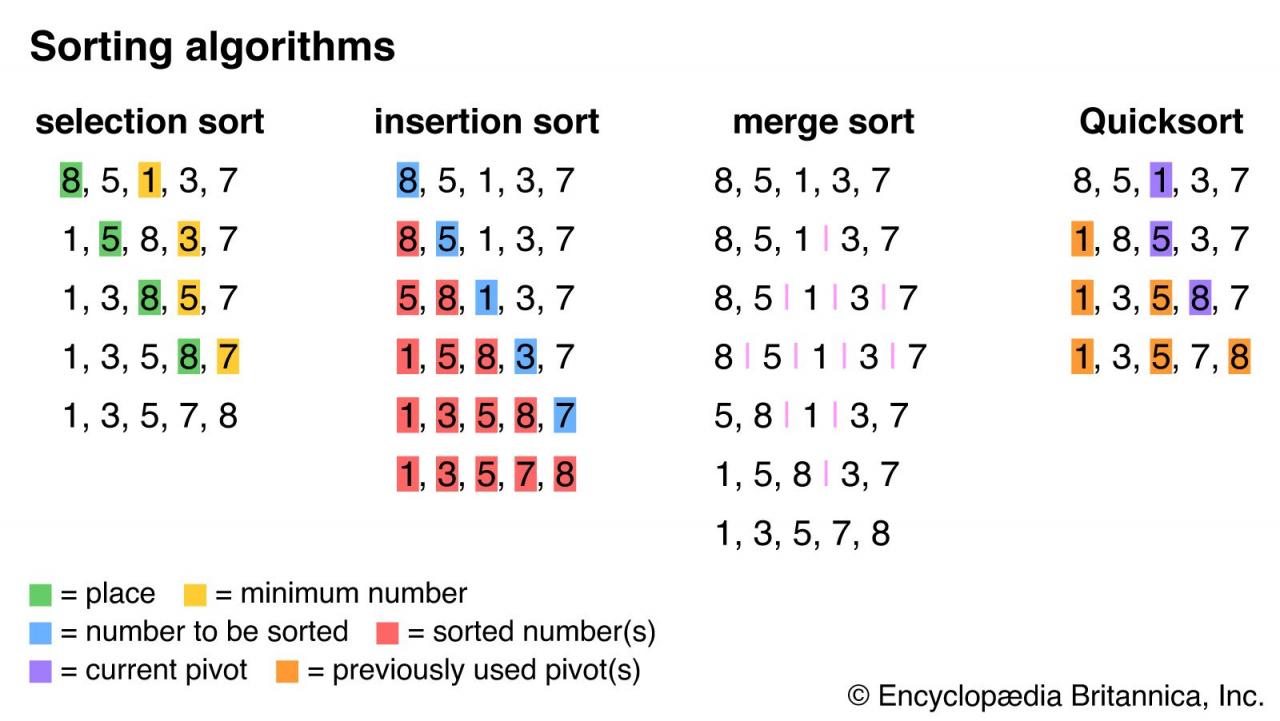
Embarking on a journey to unravel the intricacies of sort definition, we delve into the fascinating realm of data organization. Sort definition plays a pivotal role in structuring data, making it readily accessible for analysis and decision-making.
Sorting algorithms, the backbone of sort definition, come in various forms, each tailored to specific data types and applications. From the simplicity of Bubble Sort to the efficiency of Merge Sort, these algorithms empower us to arrange data in a meaningful order.
Definition of Sort: Sort Definition

Sorting is the process of organizing data into a specific order, making it easier to search, retrieve, and analyze.
It is widely used in various fields, such as:
- Data processing
- Database management
- Algorithms and data structures
- Machine learning
Different types of sorting algorithms exist, each with its advantages and disadvantages. Common algorithms include:
- Bubble Sort
- Insertion Sort
- Merge Sort
- Quick Sort
- Heap Sort
Importance of Sorting, Sort definition
Sorting is essential for data accessibility and analysis. It provides the following benefits:
- Faster searching and retrieval
- Improved data visualization
- Enhanced data analysis
- Optimized data storage and processing
Real-world examples where sorting plays a crucial role include:
- Sorting customer data for targeted marketing campaigns
- Arranging inventory items for efficient warehouse management
- Organizing financial data for accurate reporting
Methods of Sorting
| Algorithm | Time Complexity | Space Complexity | Advantages | Disadvantages |
|---|---|---|---|---|
| Bubble Sort | O(n^2) | O(1) | Simple to implement | Inefficient for large datasets |
| Insertion Sort | O(n^2) | O(1) | Efficient for small datasets | Inefficient for large datasets |
| Merge Sort | O(n log n) | O(n) | Stable and efficient | Uses additional space |
| Quick Sort | O(n log n) | O(log n) | Efficient on average | Not stable, can be inefficient for some datasets |
| Heap Sort | O(n log n) | O(1) | Efficient for large datasets | Complex to implement |
Applications of Sorting
Sorting finds applications in various industries and fields, including:
- Data Science:Sorting data into categories, identifying patterns, and building predictive models.
- Machine Learning:Preprocessing data for training models, optimizing algorithms, and enhancing accuracy.
- Database Management:Optimizing query performance, organizing data for efficient retrieval, and maintaining data integrity.
- Software Engineering:Sorting algorithms are used in operating systems, search engines, and other software applications.
Advanced Sorting Techniques
Specialized sorting algorithms exist for specific data types or scenarios:
- Radix Sort:Efficient for sorting integers or strings with a limited number of digits.
- Counting Sort:Suitable for sorting data with a known range of values.
Other advanced sorting techniques include:
- External Sorting:Used for sorting extremely large datasets that cannot fit into memory.
- Parallel Sorting:Utilizes multiple processors or threads to sort data concurrently.
Conclusion

In conclusion, sort definition stands as a cornerstone of data management, enabling us to harness the full potential of our information. By mastering the art of sorting, we unlock the gateway to efficient data processing, empowering us to make informed decisions and drive innovation.
FAQ Section
What is the primary objective of sort definition?
Sort definition aims to organize data in a specific order, making it easier to access, analyze, and interpret.
How does sorting benefit data analysis?
Sorting enables us to group similar data points together, identify trends and patterns, and draw meaningful conclusions from complex datasets.
What factors should be considered when selecting a sorting algorithm?
The choice of sorting algorithm depends on the size and type of data, as well as the desired time and space complexity requirements.





